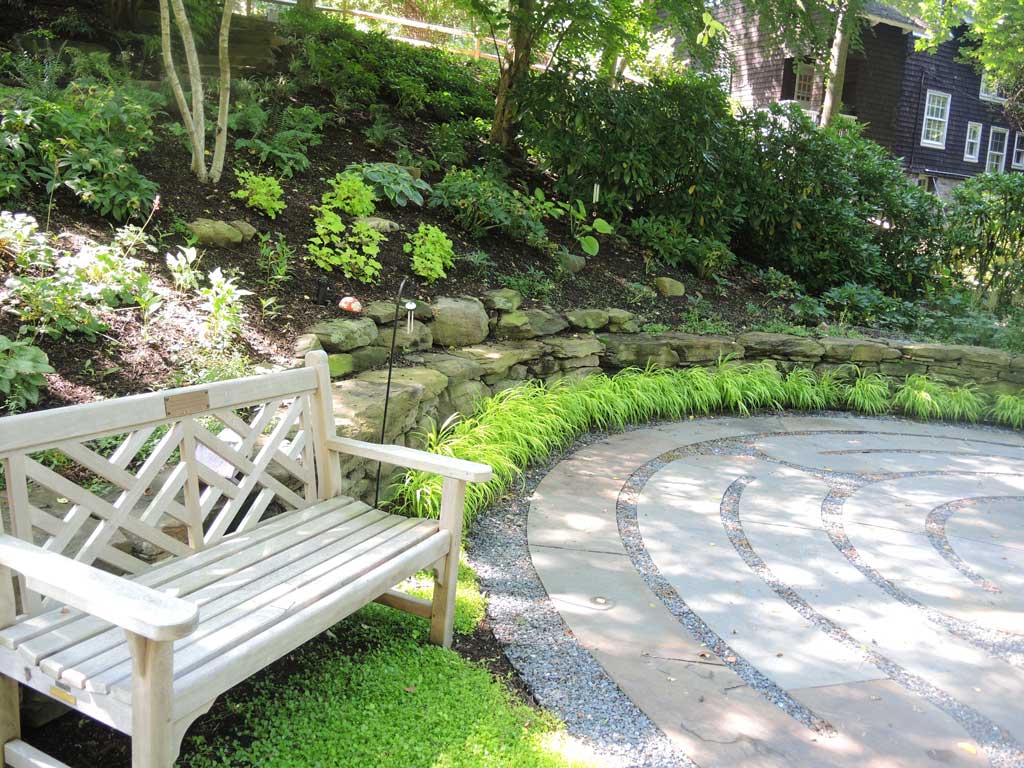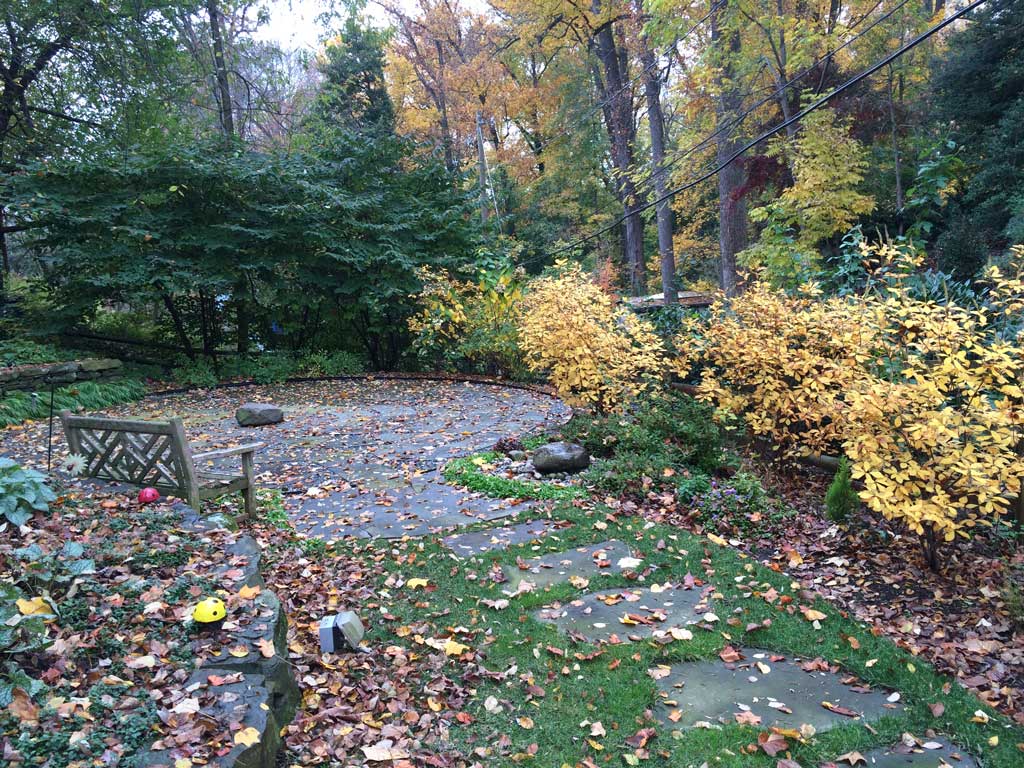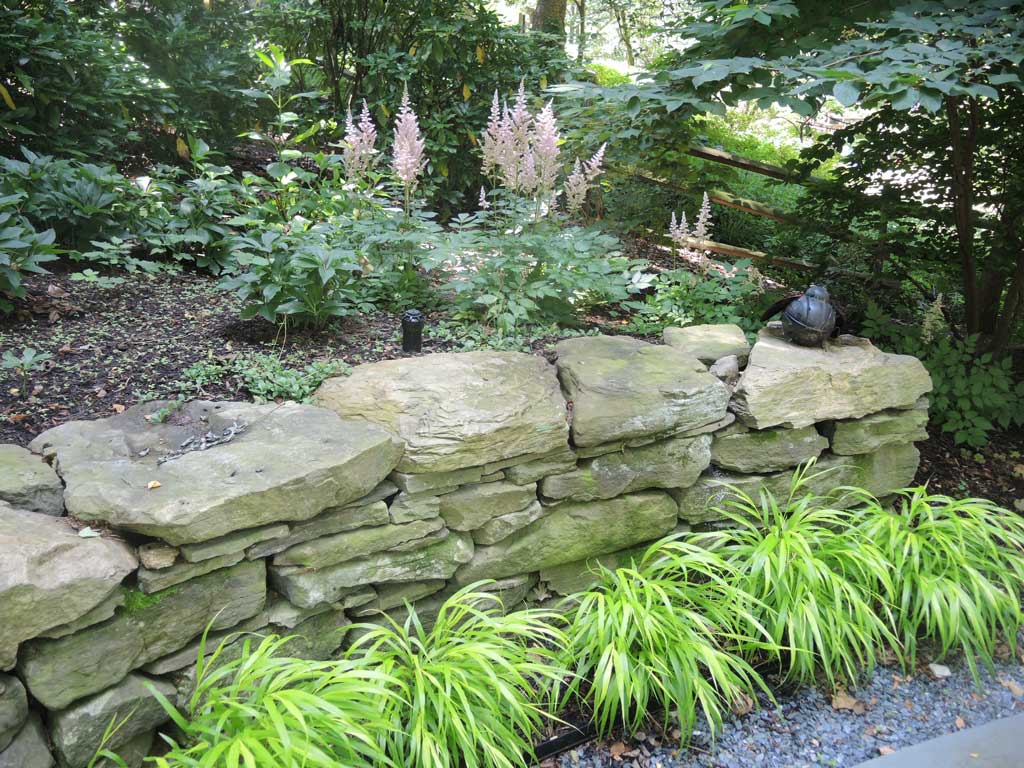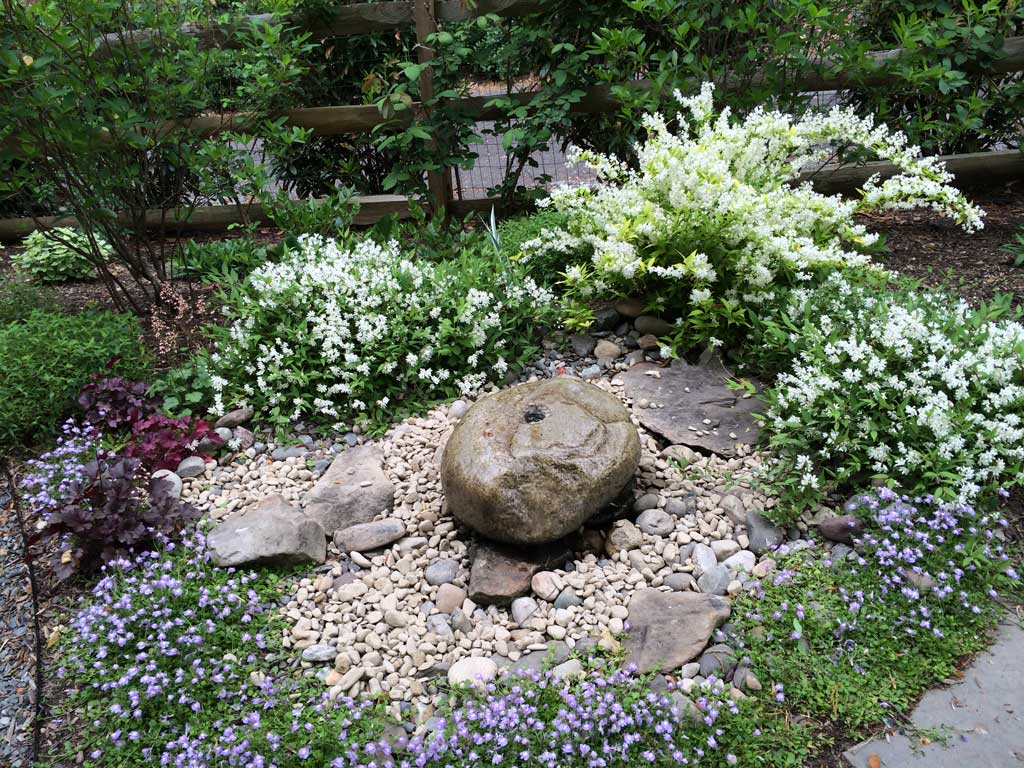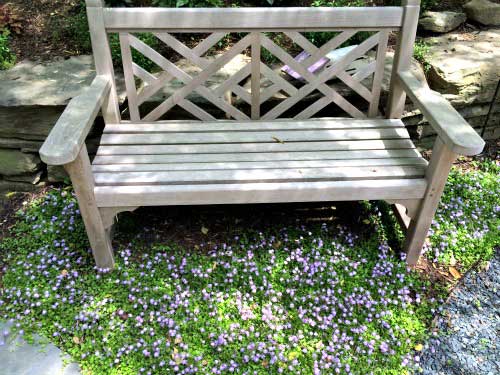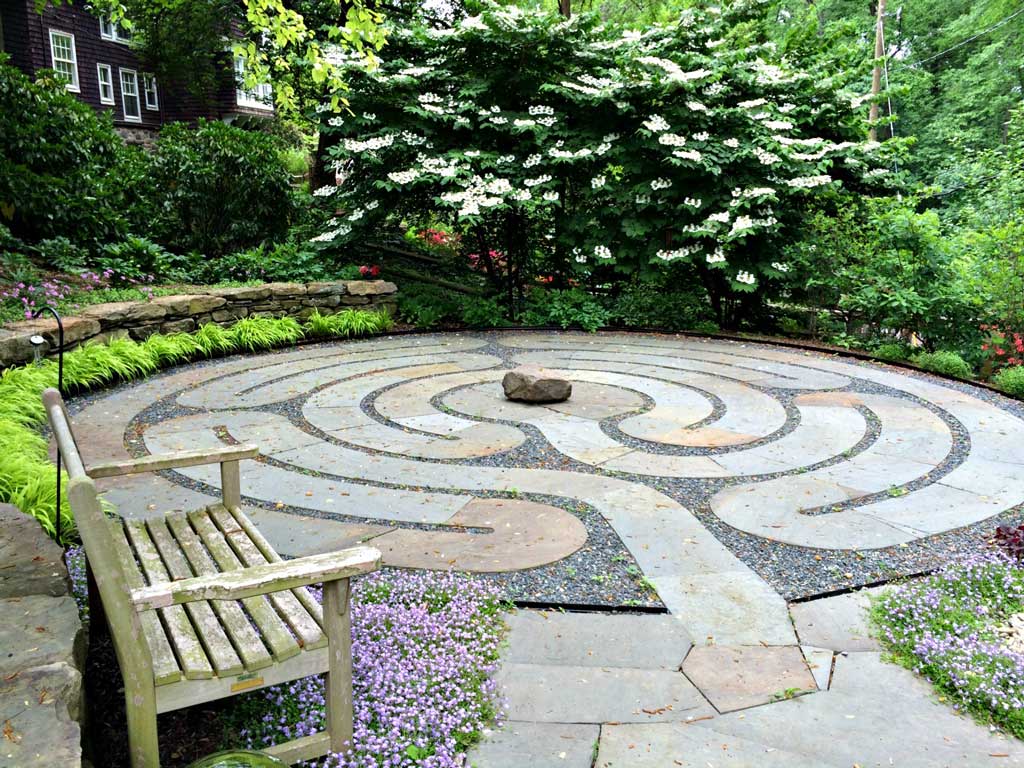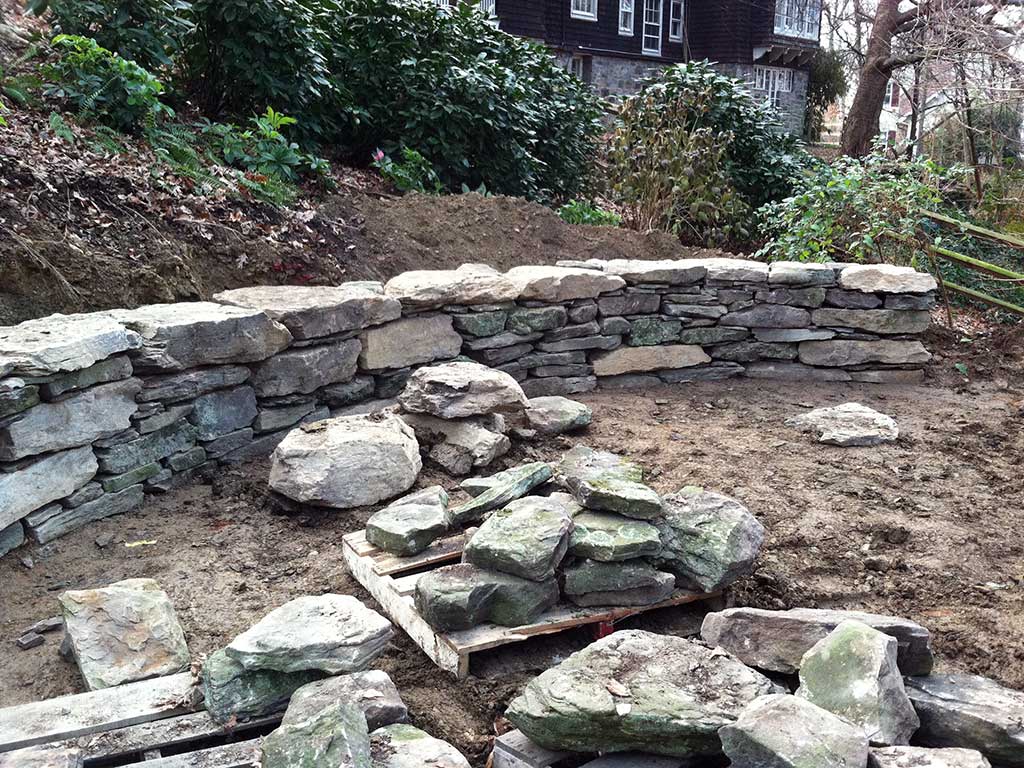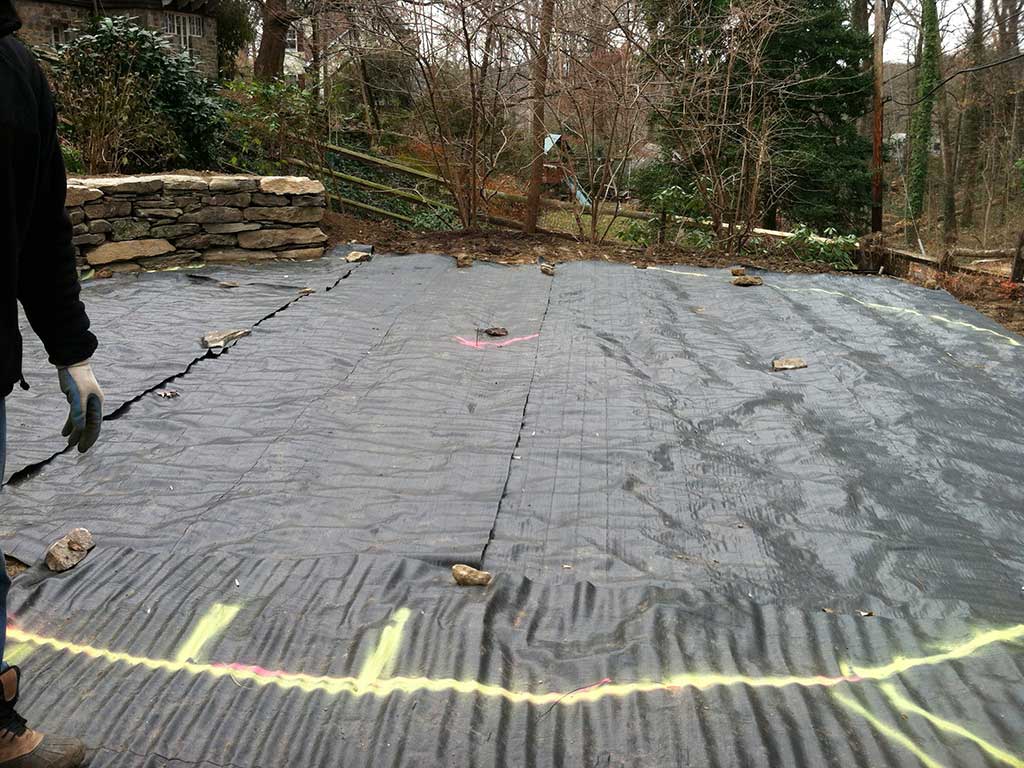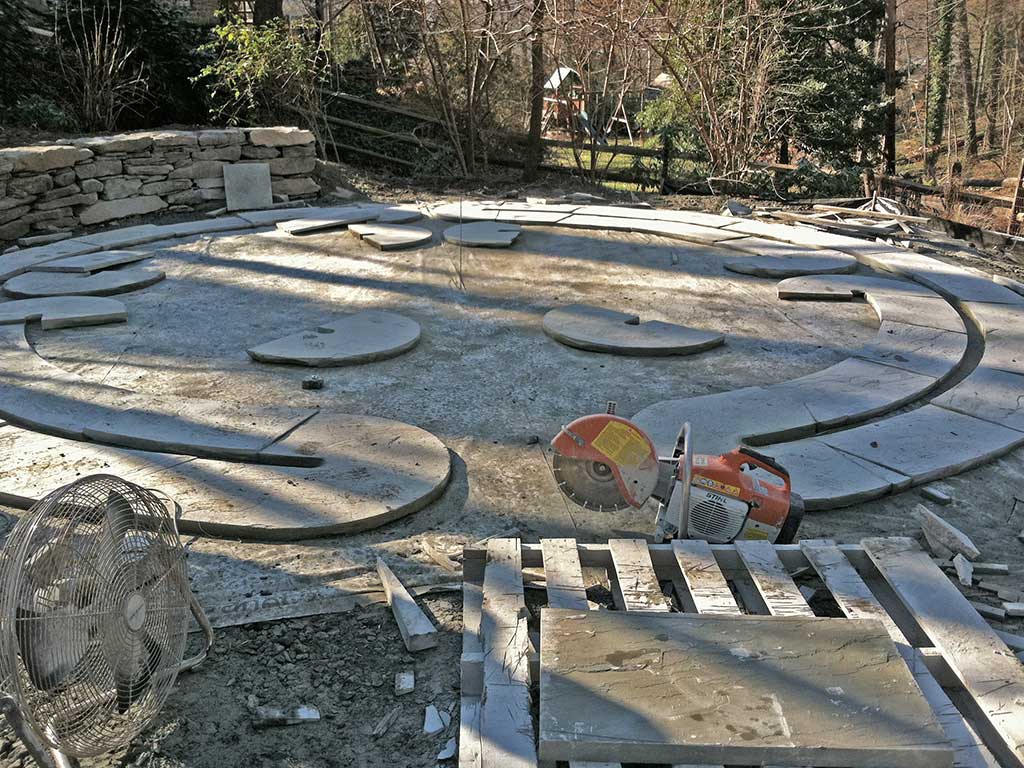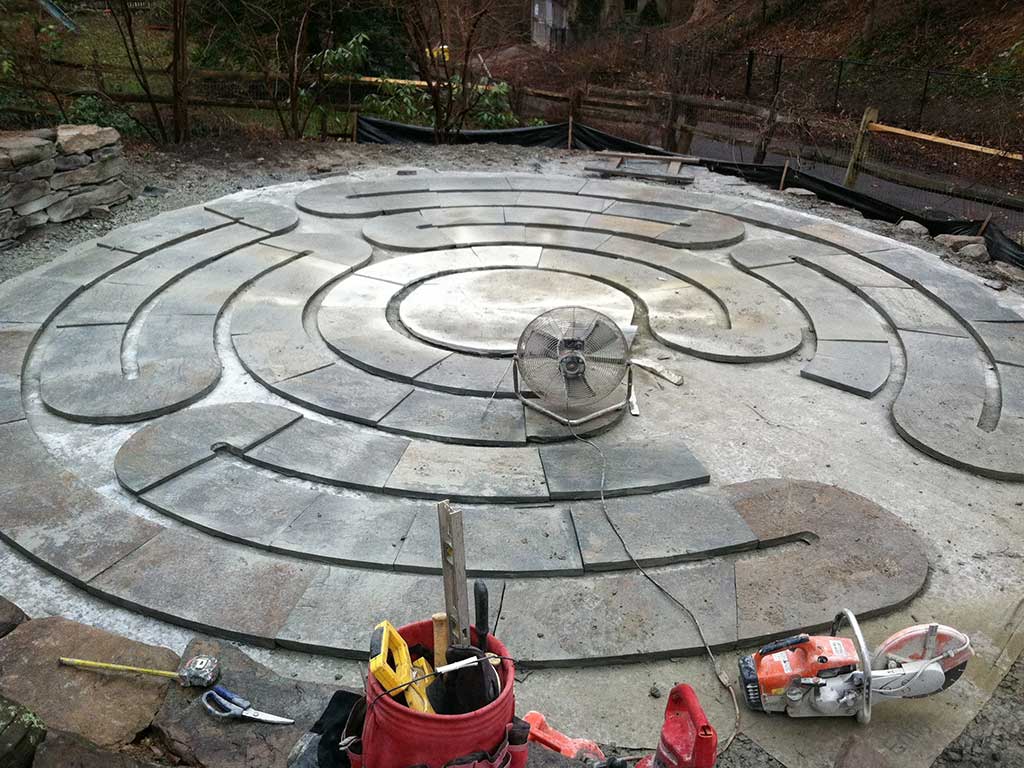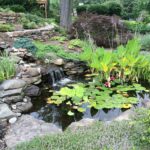Sometimes as a designer, a dream job becomes a reality. Creating a labyrinth out of stone on a sloping site fell into that category. I have always wanted to install a labyrinth and had designed one for a previous client, but because of cost, the job fell through. Here finally, was my chance to design and install a labyrinth.
Labyrinth History
My client requested a space to help with the healing process of losing a son, which started me on a journey of learning all about the lore of labyrinths, which I found have been in existence for thousands of years. Patterns for labyrinths have been found on old tablets and pottery dating back to 4000 BC, and this ancient pattern is found in many cultures around the world. It is said that labyrinths mimic the spirals of nature.
It’s a Journey
Labyrinth is different from a maze because it is a single, non-branching path that winds to the center – a path taken for personal, psychological, and spiritual transformation. To start your journey, a visit to The Heart Space which is the entrance to the labyrinth is the first stop. I designed the Heart Space as an antechamber to the main labyrinth with a small boulder water feature. As a walker, you could dip your hand in the water to start the journey or leave a floral memento at the fountain.
To break the walker’s journey at the halfway point, I wanted a perching boulder that you could rest on. I looked for the perfect size and shape to place in the center. I didn’t want the boulder to be too large and overpower the space which was 5 feet in diameter but wanted something interesting to enhance the journey.
Challenging Site
Since the site was sloping and not large, I knew that a retaining wall had to be built into the hillside to hold the slope, and the entire area had to be graded flat with a very slight incline towards the bottom for drainage. With these parameters in mind, I measured the space that would accommodate a deceptively simple design that utilized the space available. Huge fieldstone steps would have to be placed in the hillside from the upper area down to the labyrinth to facilitate traffic flow.
Materials
I looked at many materials when planning the design but ultimately decided on one of my favorites – local Pennsylvania Bluestone. Some labyrinths are made of turf set with stone but already has taken care of this kind of labyrinth, eliminated this because of the high maintenance of weed removal. For the walls and steps, Pennsylvania fieldstone is a natural fit and blends well together. Once the materials and design were chosen, we installed the labyrinth – including the water feature – in about 8 weeks.
Once completed, this huge space is very little maintenance; A few weeds pop up in the gravel which is easy to remove or spray with herbicide.
